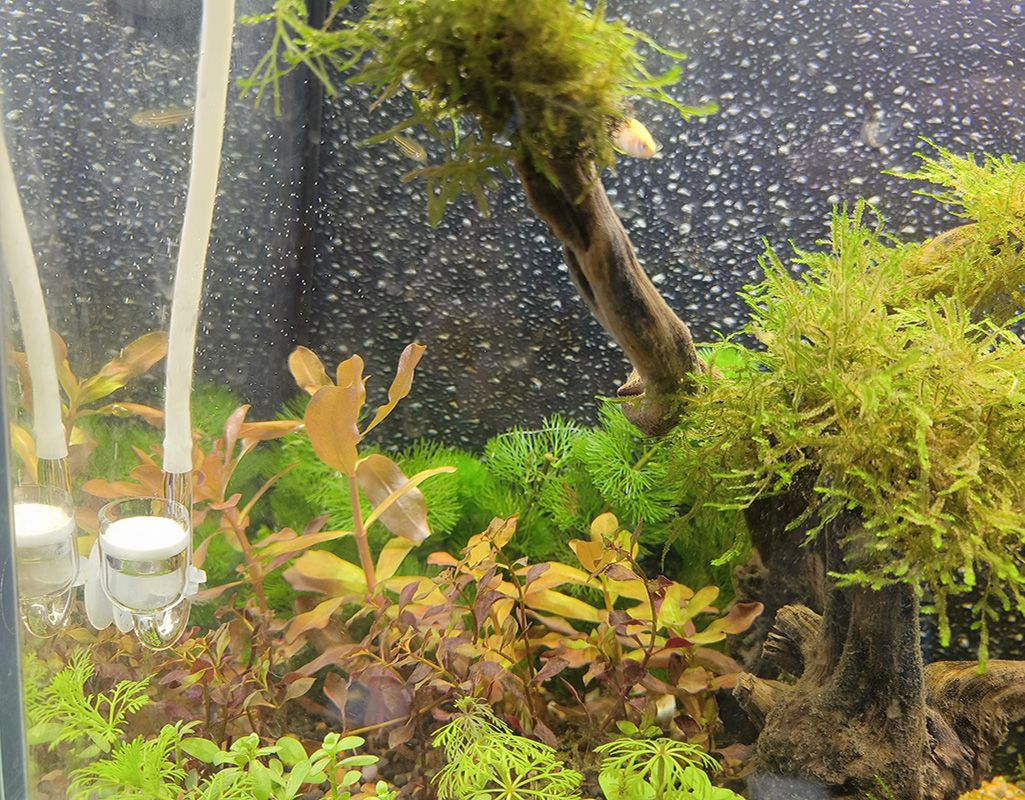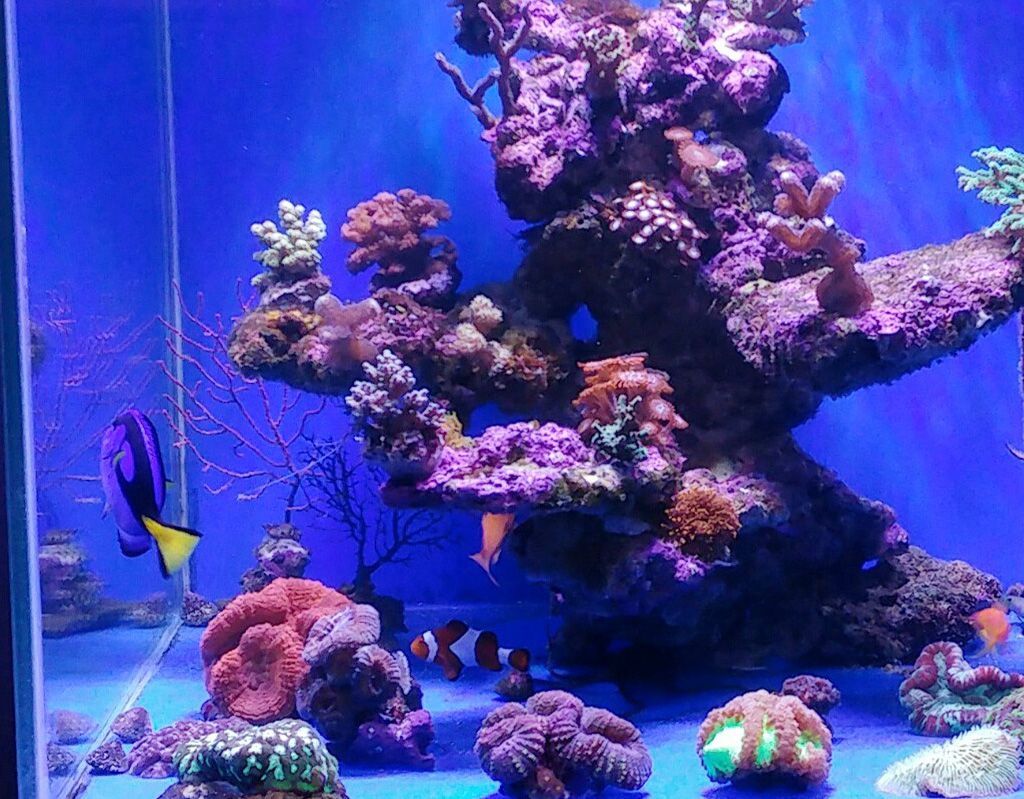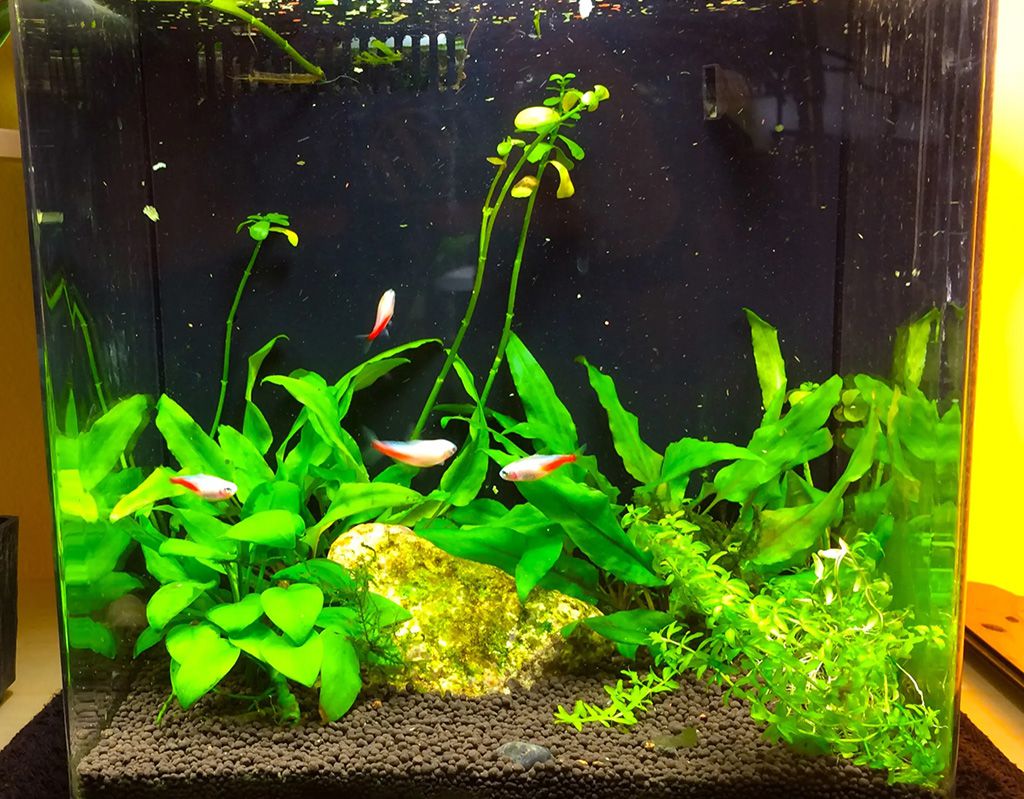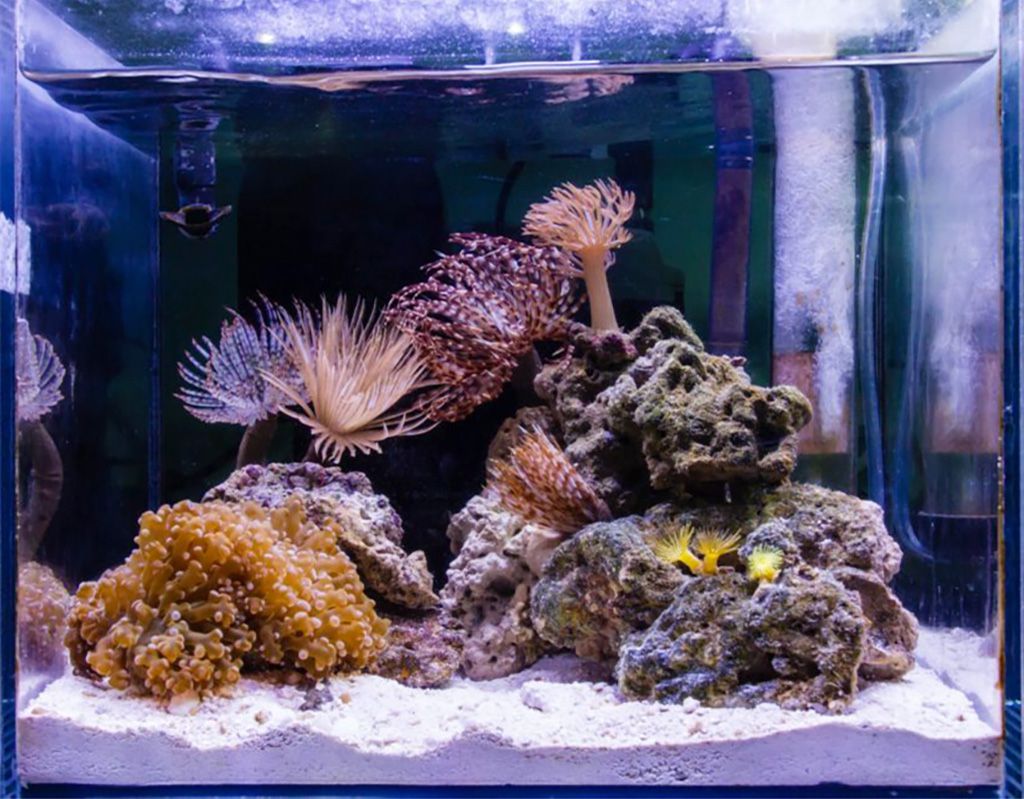Build Aquarium Safely – A Nano Aquarium
For limited space in your house or office, have you ever felt grey that you can not have a large aquarium? If so, however, a nano aquarium is particularly suitable for you. Later in this article, we will discuss a lot more about nano aquariums. After reading, you will possess a further understanding of nano aquariums.
Content Table
What is a nano aquarium
A nano aquarium is a tank with a water volume of about 30 gallons or fewer, which can keep small dwellers, like fish, shrimp, and invertebrates. Also, you can place some rocks, plants, or coral in the nano aquarium. Seeing that a nano aquarium is usually in small size, so it is suitable for your home, office, or other areas with limited space. And a nano aquarium can be placed on tables, desks, or small stands. In general, a nano aquarium can be a freshwater aquarium or a saltwater aquarium. The two are a little bit different.
Specifically, a nano freshwater aquarium often includes a substrate, rocks, stones, wood, aquatic plants, freshwater fish, and other invertebrates. On the other hand, the substrate, live rocks, coral, saltwater fish, and other invertebrates constitute a nano saltwater aquarium.

Are nano aquariums hard to keep
Are nano aquariums hard to keep? Not, but require your patience. First of all, you should set up your nano aquarium appropriately, including the water types, water parameters, and aquarium light. Next, it is vital to add suitable fish and other decorations. Do not overstock and make sure sufficient room for fish to swim.
As for daily maintenance, you should regularly change the water, clean the aquarium, as well as rinse the filter media and other accessories. Also, it is essential to remove uneaten food and feces in time. In addition to this, the nano aquariums are small, hence, the water parameter may change suddenly. As a result, you need to monitor the water temperature and water quality regularly.
On the other side, nano aquariums are more difficult to keep stable water parameters and great water quality in comparison with large aquariums. Next, we will cover some advantages and disadvantages of nano aquariums.
Pros:
- Smaller and cheaper
- Less space occupation
- Fewer maintenance cost
- Less time consumption
Cons:
- Frequent maintenance
- Livestock limitations: species and number

What to put in a nano tank
Now that a nano aquarium is a great alternative, why not set up one? Then what to put in a nano tank? In this segment, we will provide some recommendations.
A freshwater nano aquarium
1. Freshwater fish
- Betta fish
Bettas are tropical freshwater fish and they enjoy slow-flowing water. They are aggressive, hence, you should be cautious about adding tank mates in betta fish tank. Besides, the ideal bettas’ tank sizes are determined by the bettas’ species. Generally, 5 gallons is the minimum. Furthermore, bettas like a water temperature of 75-80℉ and a pH level of 6.5-8.
- Neon tetra
Neon tetras are one kind of tropical freshwater fish. They fancy hiding places, slow-moving water, and dim light. And they are peaceful and can be kept in a minimum tank size of 10 gallons. To make neon tetra live comfortably, you’d better keep the water temperature of 75-80℉, and a pH level of 6.8-7.8.
- Endler’s livebearer (Endler guppies)
Endler guppies are tropical freshwater fish, consequently, they enjoy a water temp of 72-82℉, and prefer a pH level of 6.8-7.8. Endler guppies can grow up to 1.8 inches and require a 10-gallon fish tank at least. Usually, males are more colorful than females. But the female Endler guppies are larger than male ones.

2. Aquatic plants
Adding aquatic plants can help to keep an aquarium clean. Because live aquatic plants can remove carbon dioxide and harmful chemicals, but also oxygenate the water. For a freshwater aquarium, you can add hornwort, amazon sword, moneywort, or others. Take bettas nano aquarium as an example, many aquatic plants are available, like java moss, java fern, and hornwort.
A saltwater nano aquarium
1. Saltwater fish
- Clownfish
Clownfish is one of the tropical saltwater fish. It is hardy, peaceful, and easy to keep. It needs a minimum tank size of 20 gallons. Besides, Clownfish is omnivorous and can grow up to 2-4 inches. Also, they prefer a water temperature of 75-80℉, and a pH level of 8.0-8.4.
- Yellowtail Damselfish
Yellowtail damselfish is a saltwater fish with vibrant color. It is hard and requires low maintenance, but it is aggressive. The minimum tank size should be 20 gallons. Furthermore, Yellow damselfish are omnivorous and can grow up to 2-3 inches. And the ideal water temperature and pH level respectively are 72-82℉ and 8.0-8.4.
- Cleaner groups
Members of cleaner groups can make sense in cleaning the aquarium, such as marine snails, mini starfish, crabs, and cleaner shrimp. Turbo snail, for example. It is one of the popular saltwater snails and helps to remove algae from the aquarium. Moreover, cleaner shrimp often build cleaning stations on coral or live rocks, waiting for fish to be cleaned. Ectoparasites and dead tissue are food sources for cleaner shrimp. And it is better to keep them in a 10-gallon aquarium.
2. Coral
Provided that there are lots of fish and creatures in your tank, it is feasible to add coral to create balance in your tank. Besides that, the coral can provide hiding places for fish. Also, coral can improve the ornamental value. For a nano aquarium, add coral is viable, such as zoanthids, green star polyps, and clove polyps, they are suitable for setting up a 20 gallon reef tank.

3. Live rocks
Live rocks in aquariums provide places for fish to explore and hide, and it reduces the stress on fish. Also, live rocks can be habitats for some invertebrates, nitrifying bacteria, or others. And it helps to reduce the ammonia, nitrite, and nitrate levels in the fish tank, then maintain great water quality. Rocks, like Fuji live rock and Pukani, live rock, are suitable options for a saltwater nano aquarium.
In addition to all mentioned above, nonetheless, you should add an aquarium light and build a great filtration system for both a freshwater nano aquarium and a saltwater nano aquarium. Afterward, whether you should add an aquarium heater for the saltwater tank depends on the fish types. Tropical fish usually require an aquarium heater. In freshwater nano aquariums, aquarium light makes sense in plant growth, and aquarium filters can keep the tank clean.
Besides that, take the betta nano aquarium as an example, it is better to add an air stone. As it can agitate the water’s surface and create more bubbles to dissolve more oxygen in the water. On the other hand, a saltwater nano aquarium does require an aquarium light, especially in a reef nano aquarium. Furthermore, mechanical filtration and biological filtration are needed. The former produces water movement, while the latter promotes beneficial bacteria growth.
The bottom part
Keeping a nano aquarium is also interesting, right? Why not have a try? And again, a nano aquarium is small, so the water parameters and quality are prone to change. Although it is not hard to maintain, it requires your attention and patience exactly. And you should not keep freshwater fish in a saltwater tank. That is all for today. Finally, thank you for reading.
